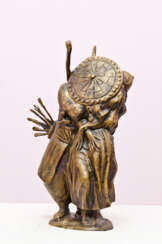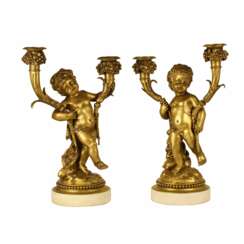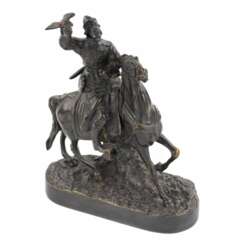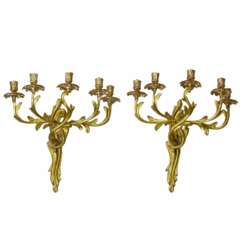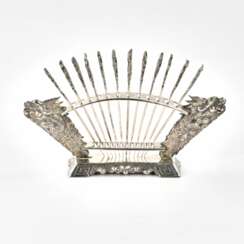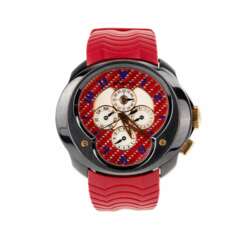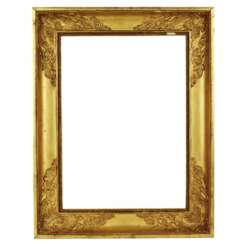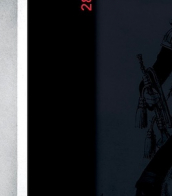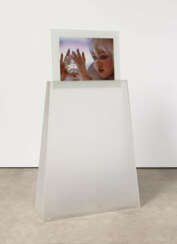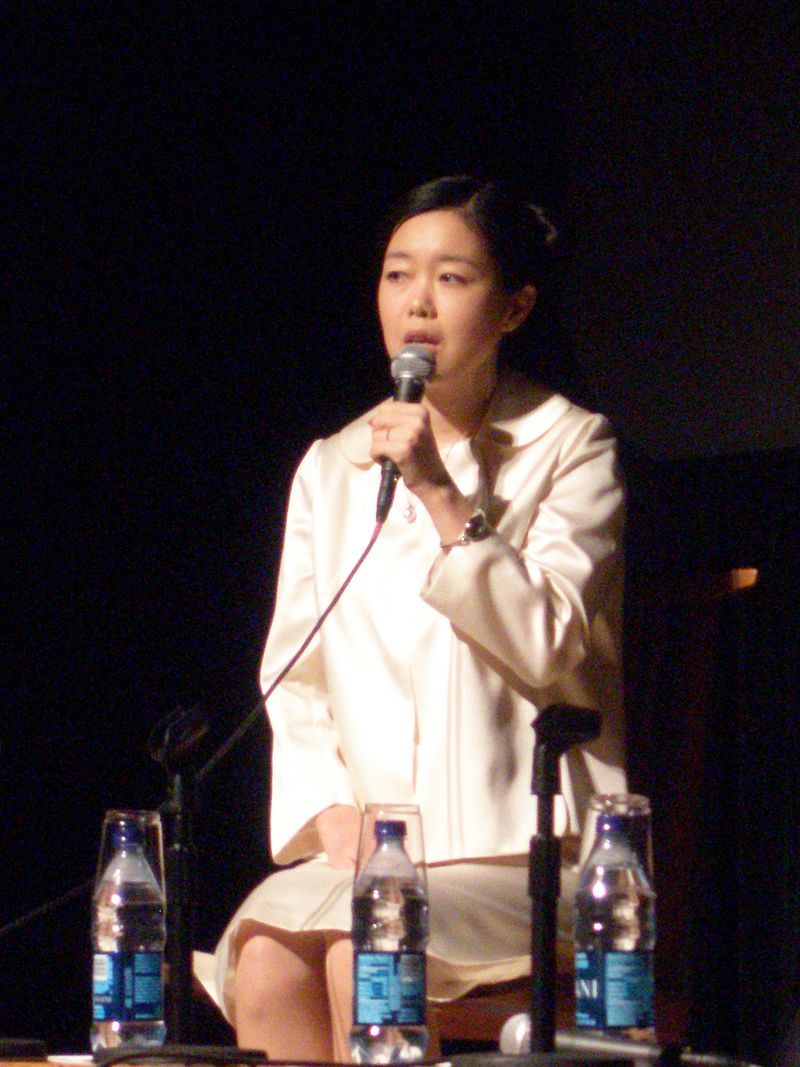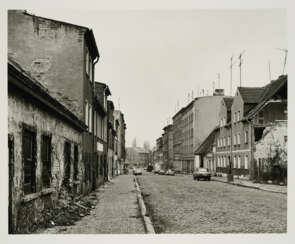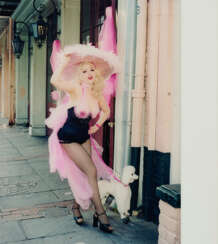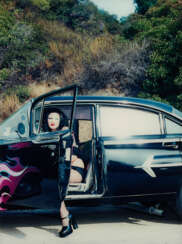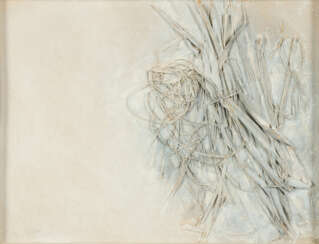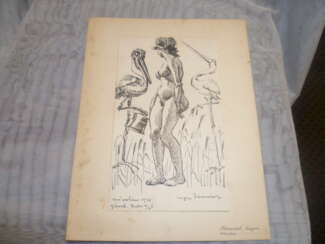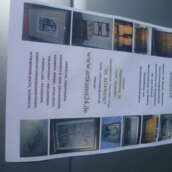3188 Items by auctions and galleries:
5cm)
Tenderness 2002 year.bronze 62x35x15cm.12000 $
ZAKIR AHMEDOV (b. 1955) 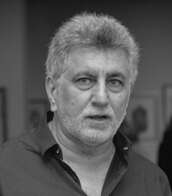 Shop AHMEDOV ZAKIR
Shop AHMEDOV ZAKIR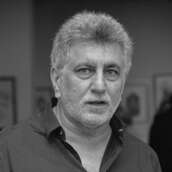

ZAKIR AHMEDOV
30.03.1955
Azerbaijan
Ахмедов Закир Ахмед. В родился в 1955 году в Баку (Азербайджан).
В 1978 году закончил Азербайджанский государственный художественное училищ им.Азим Азимзаде. факультет скульптуры.
В 1988 году окончил Азербайджанский государственный художественный институт им М. Алиева.факультет скульптуры.
С 1978 года по настоящее время проходили выставки во многих странах мира.
Член Союза художников Азербайджана и СССР с 1989 года.
Автор многих памятников. В 2005 году награжден премией "Хумай"
Скульптуры Закира Ахмедова имеются в частных коллекциях во многих странах мира.
В Азербайджане, Турции, России, Польше, Чехии, ЮАР, Франции, Германии,
Великобритании, Соединенных Штатов Америки и т.д.

Artist shop
AHMEDOV ZAKIR
Azerbaijan
Number of products: 43
Good bye 2007year bronze 42x25x15cm12000 $
ZAKIR AHMEDOV (b. 1955)  Shop AHMEDOV ZAKIR
Shop AHMEDOV ZAKIR

ZAKIR AHMEDOV
30.03.1955
Azerbaijan
Ахмедов Закир Ахмед. В родился в 1955 году в Баку (Азербайджан).
В 1978 году закончил Азербайджанский государственный художественное училищ им.Азим Азимзаде. факультет скульптуры.
В 1988 году окончил Азербайджанский государственный художественный институт им М. Алиева.факультет скульптуры.
С 1978 года по настоящее время проходили выставки во многих странах мира.
Член Союза художников Азербайджана и СССР с 1989 года.
Автор многих памятников. В 2005 году награжден премией "Хумай"
Скульптуры Закира Ахмедова имеются в частных коллекциях во многих странах мира.
В Азербайджане, Турции, России, Польше, Чехии, ЮАР, Франции, Германии,
Великобритании, Соединенных Штатов Америки и т.д.

Artist shop
AHMEDOV ZAKIR
Azerbaijan
Number of products: 43
Wedding 1998 year bronze 50x25x15cm 5850 $
ZAKIR AHMEDOV (b. 1955)  Shop AHMEDOV ZAKIR
Shop AHMEDOV ZAKIR

ZAKIR AHMEDOV
30.03.1955
Azerbaijan
Ахмедов Закир Ахмед. В родился в 1955 году в Баку (Азербайджан).
В 1978 году закончил Азербайджанский государственный художественное училищ им.Азим Азимзаде. факультет скульптуры.
В 1988 году окончил Азербайджанский государственный художественный институт им М. Алиева.факультет скульптуры.
С 1978 года по настоящее время проходили выставки во многих странах мира.
Член Союза художников Азербайджана и СССР с 1989 года.
Автор многих памятников. В 2005 году награжден премией "Хумай"
Скульптуры Закира Ахмедова имеются в частных коллекциях во многих странах мира.
В Азербайджане, Турции, России, Польше, Чехии, ЮАР, Франции, Германии,
Великобритании, Соединенных Штатов Америки и т.д.

Artist shop
AHMEDOV ZAKIR
Azerbaijan
Number of products: 43
Unloved 2017year 45x35cmOriginal Painting Oil on Canvas
ZAKIR AHMEDOV (b. 1955)  Shop AHMEDOV ZAKIR
Shop AHMEDOV ZAKIR

ZAKIR AHMEDOV
30.03.1955
Azerbaijan
Ахмедов Закир Ахмед. В родился в 1955 году в Баку (Азербайджан).
В 1978 году закончил Азербайджанский государственный художественное училищ им.Азим Азимзаде. факультет скульптуры.
В 1988 году окончил Азербайджанский государственный художественный институт им М. Алиева.факультет скульптуры.
С 1978 года по настоящее время проходили выставки во многих странах мира.
Член Союза художников Азербайджана и СССР с 1989 года.
Автор многих памятников. В 2005 году награжден премией "Хумай"
Скульптуры Закира Ахмедова имеются в частных коллекциях во многих странах мира.
В Азербайджане, Турции, России, Польше, Чехии, ЮАР, Франции, Германии,
Великобритании, Соединенных Штатов Америки и т.д.

Artist shop
AHMEDOV ZAKIR
Azerbaijan
Number of products: 43
Lot 5408 Generalfeldmarschall Gerd von Rundstedt - an invitation to a state dinner 1937, his promotion document to Hauptmann 1909 and a rare picture of his Field Marshall's car 1941
A106us: A US Lifetime Headgear Collection and other Imperial and WW II Collectibles 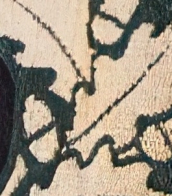

Hermann Historica
A106us: A US Lifetime Headgear Collection and other Imperial and WW II Collectibles
Date: 08.11.2025 14:00 UTC +01:00
Number of lots in the catalog: 511
Lot 5440 A Mappe and Storage Box for the Pilot-Observer Badge with Diamonds
A106us: A US Lifetime Headgear Collection and other Imperial and WW II Collectibles 

Hermann Historica
A106us: A US Lifetime Headgear Collection and other Imperial and WW II Collectibles
Date: 08.11.2025 14:00 UTC +01:00
Number of lots in the catalog: 511
Lot 73 Fuchs, Ernst (1930-2015) ‘Lohengrin’, colour litho…
Ernst Fuchs (1930 - 2015) 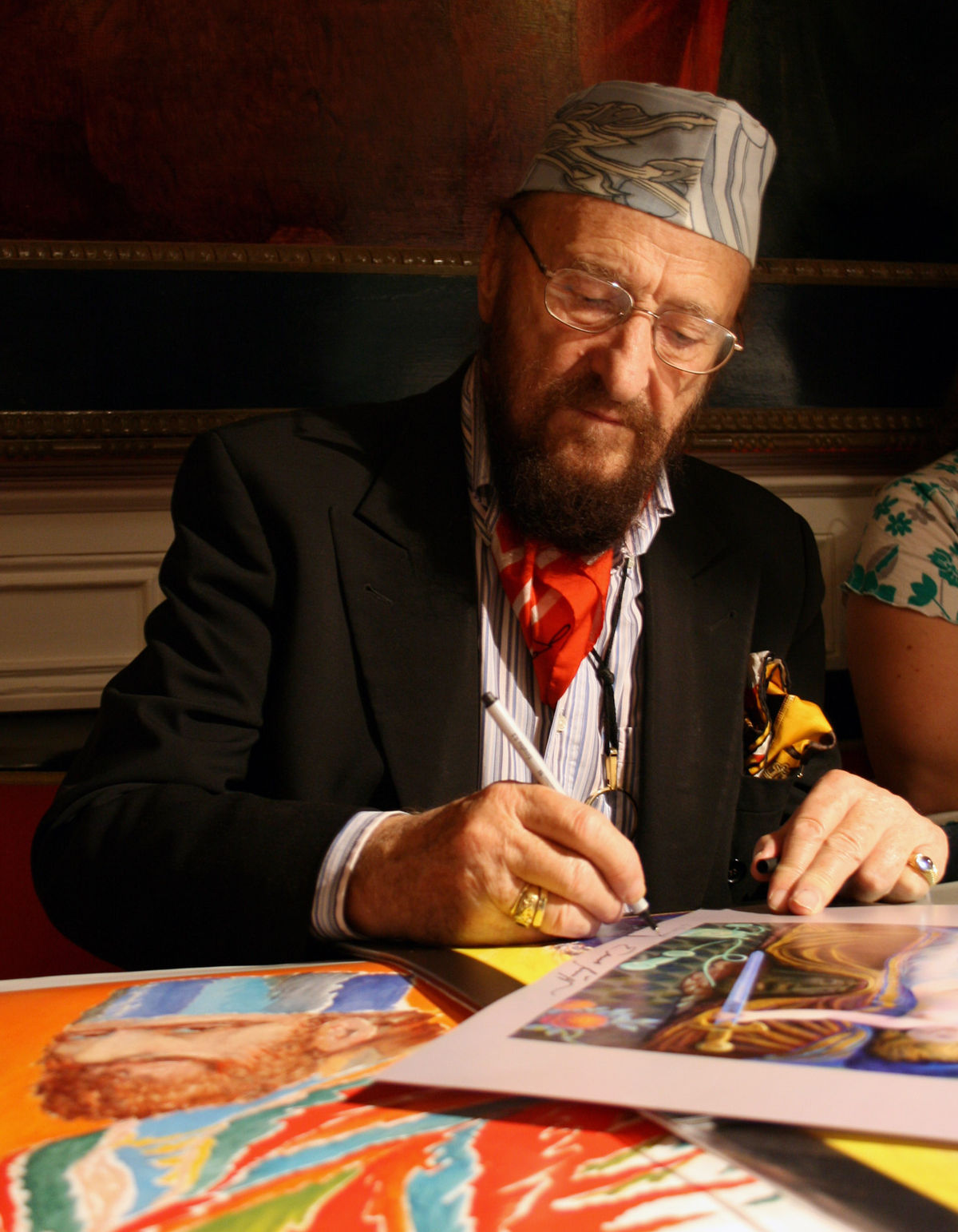 A130: Post War Art & Design and Classic African Art
A130: Post War Art & Design and Classic African Art 

Ernst Fuchs
13.02.1930 - 09.11.2015
Austria
Ernst Fuchs was an Austrian painter, draftsman, printmaker, sculptor, architect, stage designer, composer, poet, and one of the founders of the Vienna School of Fantastic Realism. In 1972, he acquired the derelict Otto Wagner Villa in Hütteldorf, which he restored and transformed. The villa was inaugurated as the Ernst Fuchs Museum in 1988.

Auktionshaus Kendzia
A130: Post War Art & Design and Classic African Art
Date: 24.01.2026 10:00 UTC +01:00
Number of lots in the catalog: 454
Lot 76 Thomas Struth. Schöningerstraße (mit Ruine), Magdeburg 1991
Thomas Struth (1954)  A1279: Beyond the Mainstream – A Rhenish Collection
A1279: Beyond the Mainstream – A Rhenish Collection 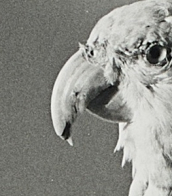

Thomas Struth
1954
Germany
Thomas Struth is a German photographer who is best known for his Museum Photographs series, family portraits and black and white photographs of the streets of Düsseldorf and New York taken in the 1970s. Struth lives and works in Berlin and New York.

VAN HAM Kunstauktionen GmbH
A1279: Beyond the Mainstream – A Rhenish Collection
Date: 20.11.2025 18:00 UTC +01:00
Number of lots in the catalog: 103
Lot 91 Katharina Bosse. New burlesque, Candy Whiplash
Katharina Bosse (1968)  A1279: Beyond the Mainstream – A Rhenish Collection
A1279: Beyond the Mainstream – A Rhenish Collection 

Katharina Bosse
28.05.1968

VAN HAM Kunstauktionen GmbH
A1279: Beyond the Mainstream – A Rhenish Collection
Date: 20.11.2025 18:00 UTC +01:00
Number of lots in the catalog: 103
Lot 92 Katharina Bosse. New burlesque, Lovella, La-La-Lamay
Katharina Bosse (1968)  A1279: Beyond the Mainstream – A Rhenish Collection
A1279: Beyond the Mainstream – A Rhenish Collection 

Katharina Bosse
28.05.1968

VAN HAM Kunstauktionen GmbH
A1279: Beyond the Mainstream – A Rhenish Collection
Date: 20.11.2025 18:00 UTC +01:00
Number of lots in the catalog: 103
Lot 169 Eduard Micus. Untitled
Eduard Micus (1925 - 2000) 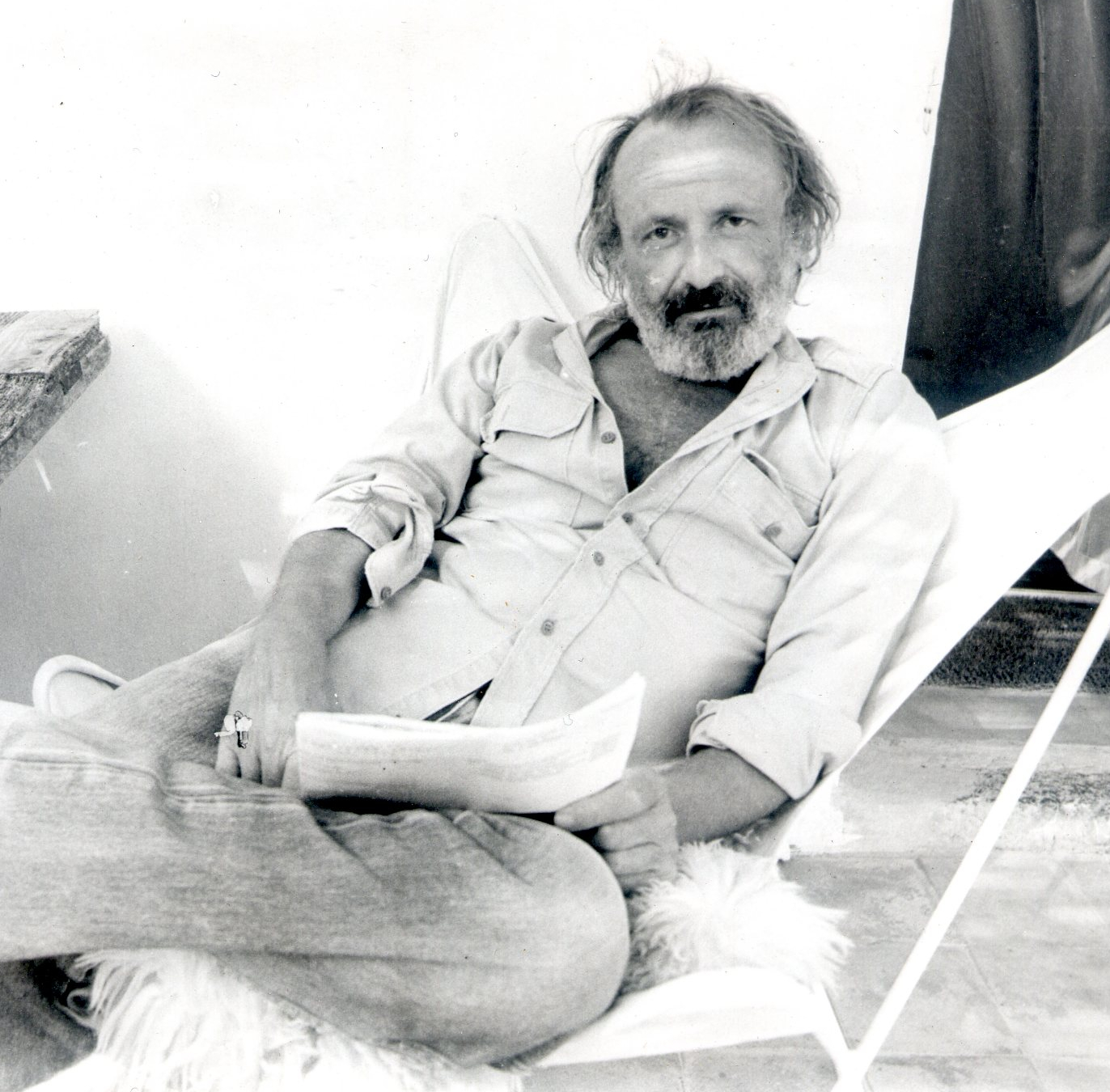 A1282: Galerie Thomas – Part II
A1282: Galerie Thomas – Part II 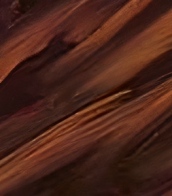

Eduard Micus
12.07.1925 - 16.11.2000
Germany
Eduard Micus is a German painter and one of the founders of the artist group SYN.

VAN HAM Kunstauktionen GmbH
A1282: Galerie Thomas – Part II
Date: 08.12.2025 17:00 UTC +01:00
Number of lots in the catalog: 146


